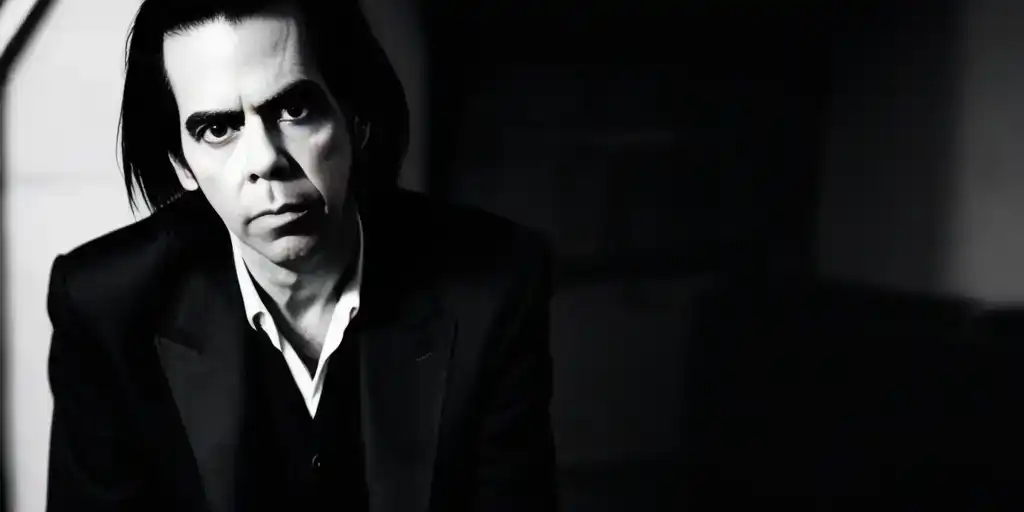Exploring the Compelling World of Nick Cave and His Artistic Evolution Nick Cave’s musical journey is one that is deeply entrenched in themes of chaos, melancholy, and redemption. Since the early days of his career, Cave has been a figure synonymous with the unresolved and the emotionally complex. Over decades, he has traversed various musical landscapes, from the raw energy of post-punk to the introspective realms of piano ballads and even the gritty edge of garage rock. Cave’s music is not merely a collection of songs but an exploration of life’s darker shades, often touching upon themes such as death, dysfunction, and the quest for redemption. Whether leading the short-lived yet influential Australian post-punk band The Birthday Party, fronting the long-running project The Bad Seeds, or collaborating with multi-instrumentalist Warren Ellis, Cave has always managed to captivate his audience with his gripping and often haunting voice. The Early Years: From Post-Punk to Goth Rock Nick Cave’s initial foray into the music world was marked by his involvement with The Birthday Party, a band that, despite its brief existence, left an indelible mark on the post-punk scene. The band’s chaotic energy and Cave’s intense stage presence quickly garnered a cult following. However, it was with The Bad Seeds that Cave truly found his artistic voice. The Birth of The Bad Seeds Formed in 1983, The Bad Seeds allowed Cave to explore a broader musical palette. The band’s early work, such as the 1986 album “Your Funeral… My Trial,” leaned heavily into goth rock. This period saw Cave’s music steeped in morbid imagery and themes of unsustainable love. The songs were inhabited by wretched characters seeking redemption that often seemed just out of reach. A Shift to Moody Piano Ballads As the years progressed, Cave’s sound evolved. By the late 1990s, he had moved towards a more subdued, piano-driven style, exemplified by the 1997 album “The Boatman’s Call.” This album was a stark departure from his earlier work, featuring minimalist arrangements that put Cave’s lyrical prowess front and center. The themes remained dark, but the delivery was more introspective and reflective. The Impact of Personal Tragedy on Cave’s Music Nick Cave’s music has always been deeply personal, but it took on an even more poignant tone following the tragic deaths of his sons. In 2015, Cave’s fifteen-year-old son, Arthur, died after falling from a cliff. This devastating loss profoundly influenced Cave’s subsequent work, resulting in some of the most emotionally raw music of his career. The Healing Power of Music The albums released in the aftermath of Arthur’s death, “Skeleton Tree” (2016) and “Ghosteen” (2019), are hauntingly beautiful. These records are characterized by their subtle, sweeping harmonic details and Cave’s mutable chants that draw the listener into his world of grief and sorrow. Tracks like “Hollywood” capture the essence of loss and the search for peace, with Cave’s voice sounding both lithe and weightless. The Role of Fan Interaction in Cave’s Recovery In the wake of these personal tragedies, Nick Cave found solace in his relationship with his fans. Through his recurring Q&A newsletter, “The Red Hand Files,” Cave has maintained an open dialogue with his audience, discussing themes of loss, grief, and recovery. This communication has not only helped him process his own emotions but has also provided comfort to many of his fans experiencing similar struggles. The Upcoming Album: “Wild God” As Nick Cave and The Bad Seeds prepare to release their new album, “Wild God,” on August 30, anticipation is high. Cave’s ability to transform personal pain into universally relatable art continues to resonate with listeners around the world. The upcoming album promises to be another chapter in Cave’s ongoing exploration of the human condition. Ariel Stess’s “Kara & Emma & Barbara & Miranda”: A Masterclass in Lo-Fi Drama Ariel Stess’s play “Kara & Emma & Barbara & Miranda,” directed by Meghan Finn, is a superb example of lo-fi slow burn storytelling. The play features a sequence of seemingly desultory episodes that conceal a meticulously precise structure. The narrative revolves around four women—Kara, Emma, Barbara, and Miranda—and their overlapping interactions with various men, all played by Paul Ketchum. The Intricate Weaving of Characters and Stories Each character in the play brings a unique perspective to the narrative. Emma, a babysitter, is the daughter of Barbara and runs away with Kara’s husband. Miranda works at an REI store with George, adding another layer of complexity to the interwoven stories. The play’s strength lies in its ability to maintain the audience’s interest through its intricate character dynamics and unexpected twists. Comic Relief and Emotional Depth The cast delivers tremendous performances, with Zoë Geltman and Colleen Werthmann standing out as comic powerhouses. Their ability to infuse humor into the narrative provides much-needed relief from the play’s more intense moments. Together, the cast transforms the last half hour into a mad, rotating farce that culminates in a surprisingly stirring moment of calm. Calvin Royal III’s “Ballet Festival: UNITE” Calvin Royal III, a principal dancer with the American Ballet Theatre, is showcasing his multifaceted talents as a producer, director, and performer in the “Ballet Festival: UNITE.” This one-week festival features two programs heavy on solos and duets, with works by both renowned and emerging choreographers. A Celebration of Diversity in Ballet The festival’s lineup includes pieces by choreographers such as George Balanchine and Kenneth MacMillan, alongside works by contemporary creators. The inclusion of guest performers from various companies adds to the festival’s allure, with standouts like Boston Ballet’s Chyrstyn Fentroy and the Paris Opera Ballet’s Sae Eun Park gracing the stage. A Platform for Emerging Talent By focusing on solos and duets, the festival provides a platform for dancers to showcase their individual strengths and artistic expressions. This approach not only highlights the versatility of the performers but also introduces audiences to a broader range of choreographic styles. The Art of Reynaldo Rivera: A Glimpse into a Marginalized World Reynaldo Rivera’s exhibition “Fistful of Love/También la belleza” at MOMA PS1 offers a captivating
Which VPN Protocol Uses IPSec to Provide Data Encryption?
Discover which VPN protocol leverages IPSec for data encryption. I’ll explain how this secure method protects your online privacy and why it matters for your internet safety.






